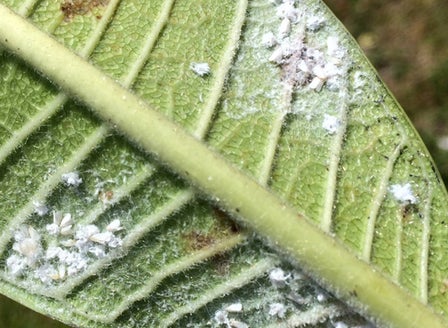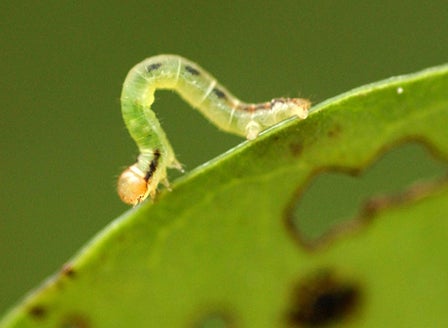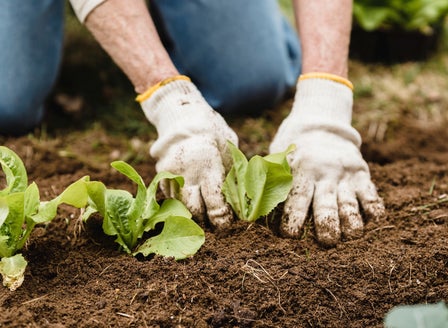Whether you love them or hate them Brussels Sprouts like cooler temperatures so are an essential crop for our winter vegetable gardens. Loaded with heaps of essential vitamins and minerals they are a must have and can be stir fried, boiled or even added to salads.
Planting Calendar
Brussels Sprouts are a cool weather crop so can be grown from late summer and autumn.
Harvest In
80-100 days
Brussels Sprouts are ready to harvest when the heads are 2-3cm in diameter, bright green and firm to the touch. Remove from the plant by gently twisting the sprout until it breaks off the stem.
Prepare
Position
Brussels Sprouts like a sunny position that has free draining soil. With some protection from strong winds.
Soil
When planted into the ground, Brussels Sprouts likes a free draining soil that is rich in organic matter. To improve the organic content in your soil, break up the soil and add Kings Compost and Kings Sheep Pellets and Grosafe Ocean Fert then mix together well. When growing in containers, plant into Kings Container mix or for an organic option use Living Earth Organic Vegetable Mix .
Plant
Brussels Sprouts can be sown directly into the garden, raised beds or large containers that are at least 40cm deep. Or sow into a seed tray with Organic Seed raising mix and transplant out once they have formed their second set of leaves. Gently remove the seedling from the tray and plant into the vegetable garden. Space plants 70cm apart and in rows 50cm apart so they have plenty of space to grow. Take care when transplanting so that the young soft roots are not damaged. Gently firm the soil down after planting and water in well with Aquaticus Garden Booster, this will help the seedlings settle in.
Care
Watering
Aim to keep the soil evenly moist, water slowly allowing the water to sink down into the roots, rather than allowing it to run off the top of the soil surface. Add Saturaid into the soil at planting as this will help channel the water deep down into the root zone.
Feeding
When planted in the ground liquid feed every month with Aquaticus Garden Booster, this encourages root growth and increases the microbial activity in the soil. Monthly applications of Kings Sheep Pellets will help with soil conditioning and plant health. If planted into a container, feed with Kings Liquid Fast Food along with monthly applications of Aquaticus Organic Garden Booster this encourages strong roots and a healthy immune system.
Protecting
Protect your young seedlings from Slugs and Snails by applying Quash slug bait. Re-apply after rain.
Spraying
Should Whitefly or White Butterfly Caterpillar be an issue spray with Nature's Way Organic Citrus, Veggie & Ornamental Spray
Pruning
Remove any yellowing leaves to encourage new growth.
General Care
When using sprays, chemicals or fertilisers always read the label and follow the instructions. Apply sprays in the evening to avoid harming beneficial insects.
Beginner Tip
As you harvest each sprout remove any yellowing leaves. The plant will continue to grow up and produce more sprouts as it grows.
Expert Tip
Sprouts grow on a stalk and each stalk may produce 15-20 sprouts. The plant may grow to be up to 2-3 feet tall. They get their sweet flavour if kept cool in the summer and exposed to frost.
Tip
The flavour of Brussels Sprouts will improve after a light frost.
Frequently Asked Questions
How do I prune Brussels Sprouts?
Remove any yellowing leaves to encourage new growth.
What is the best time of year to plant Brussels sprouts?
The best time to plant Brussels sprouts is in late summer to early autumn.
How often should Brussels sprouts be watered?
Aim to keep the soil evenly moist, water slowly allowing the water to sink down into the roots, rather than allowing it to run off the top of the soil surface. Add Saturaid into the soil at planting as this will help channel the water deep down into the root zone.
How do I know when Brussels sprouts are ready to harvest?
Brussels Sprouts are ready to harvest when the heads are 2-3cm in diameter, bright green and firm to the touch. Remove from the plant by gently twisting the sprout until it breaks off the stem.
What should I do if my Brussels sprouts plants are not forming sprouts?
Ensure they are getting enough light and water, check for pests, and make sure they are not overcrowded. Proper spacing and fertilisation can also help.


